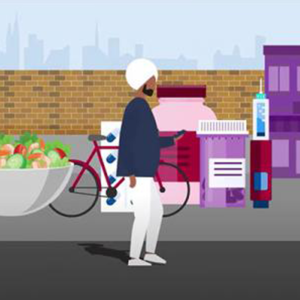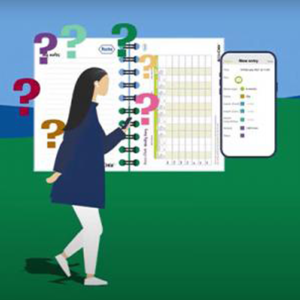How to check your blood sugar level
If you’ve been given a blood glucose meter to use to start monitoring your blood glucose levels (sugar levels), it’s important to get to know how to use it so you can get the most accurate results from it. There are lots of places to find information about how best to use your meter. Firstly, your healthcare professional will be able to give you lots of tips on using it to monitor your blood glucose. There will also be plenty of information for you to find from the manufacturer of your meter; you should receive a user manual with the meter, and you will probably be able to find some hints and tips on their website or their YouTube channel.
Important things to have to hand when using your meter are; test strips and lancets as well as a diary or something to make notes on or an app such as the mySugr app.
Test strips - it’s worth making sure your strips are stored properly so that they can give you accurate readings. They should be stored with the lid securely on the pot, and not kept anywhere that they will be exposed to extreme temperatures. When using the test strips, you will need to use a new one every time, and will need to check that they have not passed their expiry date.
Lancets - these are what you will use to prick your finger. A couple of things to remember - always use a new one every time and always dispose of them safely. It’s also good to remember to use a different finger every time as well.
Diary - keeping a record of your readings will help you and your healthcare team decide what actions you need to take. It’s worth recording your readings as you do them, along with the time and date, rather than trying to remember afterwards. For more information on structuring your blood glucose monitoring, see our structured monitoring page. You might also find it useful to record things like what you’ve eaten, any activity you’ve done and also any medication you’ve taken. You can use different things to keep a record of all of this - for example diabetes apps, a physical diary or logbook, or just a notebook.
If you are ever unsure about how to use your meter, or have any questions; you can either speak to your healthcare professional or contact the company directly via their customer support number.
Before making any changes to your lifestyle or medication, please speak to your healthcare professional to check it is suitable for you
This content is provided for general information only. It is not intended to amount to advice on which you should rely – you must obtain professional or specialist advice from your healthcare professional before taking, or refraining from, any action on the basis of the content. Although we make reasonable efforts to ensure that the content is up to date, Roche makes no representations, warranties or guarantees, whether expressed or implied, that the content is accurate, complete, up-to-date or that it should be relied upon.




